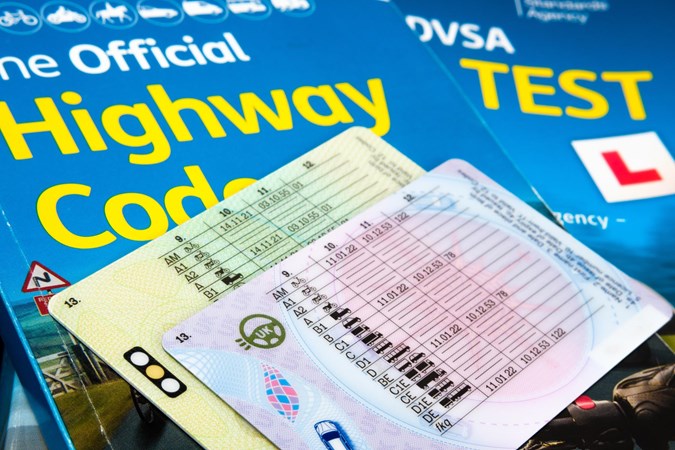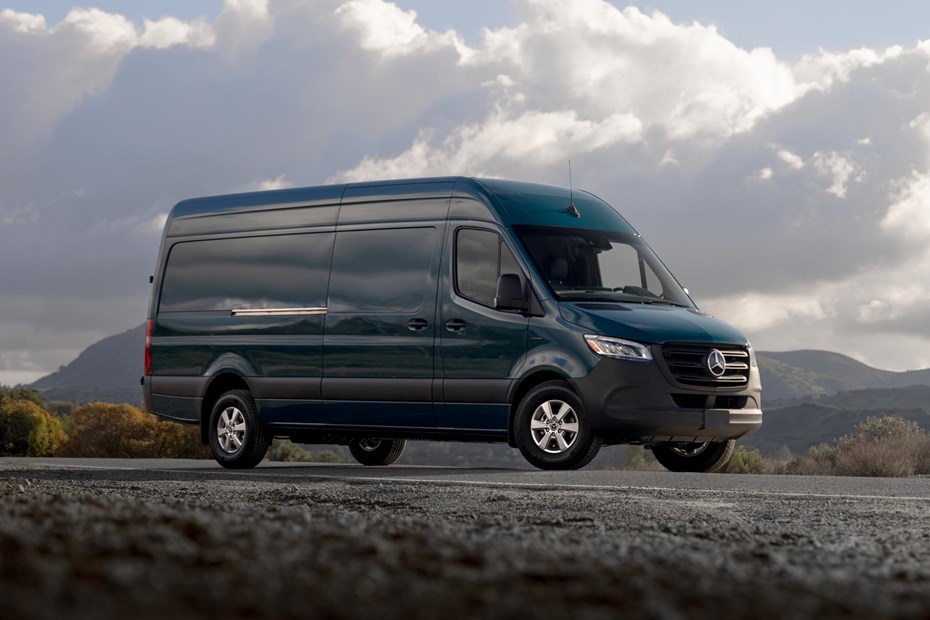The further you want to go in an electric van the bigger the battery you need. There are some things you can do to improve efficiency, but ultimately the equation is simple – more miles requires a bigger battery which means more weight that a van has to carry around.
This means there is a fine balancing act to be had, where van manufacturers, and therefore customers, have to choose between having more payload or the ability to go further between charges with a longer electric range.
If vans were simply allowed to be as heavy as they liked then this wouldn’t be an issue – most are strong enough to carry a large battery and a big load – but the law defines a light commercial vehicle as having a gross vehicle weight (GVW) of no more than 3.5-tonnes. This means that it is not allowed to weigh more than this when it sets off fully laden, complete with driver and passengers, all the necessary fuel and the load in the back.
If you have too big a battery, therefore, then you get less and less payload to play with. The 2024 Mercedes-Benz eSprinter has a 113kWh battery that is so heavy it results in a kerb weight of around 3,250kg. This leaves only 250kg wriggle room, and some of that has to go towards accommodating the driver.
If you have a couple of larger passengers on board then you won’t be able to carry anything more than a massive load of balloons. The only option is to make the gross vehicle weight higher to give more leeway. The vans are physically perfectly capable of carrying the extra weight – some vans such as the Iveco Daily offer heavy duty versions with GVW up to around 7.0-tonnes. In a really basic sense it is just a case of reclassifying it and changing the paperwork and the information on the VIN plate so it has a higher GVW.
So how do I drive a large electric van with a GVW over 3.5-tonnes?
There are exceptions to the rule. If you passed your driving test before 1997 then you were always permitted to drive a heavier vehicle – one with a total maximum authorised mass (MAM) of up to 8.25-tonnes in fact. This was always possible on the standard Category B licence that you get if you take and pass your test in a conventional passenger car.
If you passed after 1997 then you are subject to the 3.5-tonne maximum and need to do a test to upgrade your licence to a Category C that allows you to drive a heavier vehicle. However, this is not a cheap undertaking.
As 1997 fades into the memory, there will be more and more people that fall into this category. In 2019, the government brought about a derogation to allow van makers to slightly raise the GVW for electric vans to 4.24-tonnes. This would allow them to carry more of a payload and have a bigger battery. As a result, the aforementioned eSprinter has a payload of around 1,000kg, which is much more useable.
However, there was a catch. The government stipulated that drivers had to go through five hours of training first, and gain a certificate. This is cheaper, quicker and less of an upheaval to the whole licence system. However, the government doesn’t really make it clear what is involved with the training, or how to go about doing it.
What is the AFV course like?
To find our what is involved in the training (and so we can drive 4.25-tonne GVW electric vans in the UK like the Mercedes eSprinter) we signed up for a course. Ours was run by GTG Training, based in Glasgow, but it was all online so your course mates and instructor can and probably will be based in totally different parts of the country.
It starts with a bit of admin, where confirm a few bits of information such as your contact details and your driving licence number so they can check you are as qualified as you say you are. Then, like any good course, it’s time to say who you are and what your experience is with alternatively fuelled vans.
This is potentially one of the more interesting and informative elements of the course. The chances are that there will be a wide variety of different experiences when it comes to AFVs (it was all electric in our case) and the real-world anecdotes of your fellow drivers could well reflect a wide range of situations.
Our group was comparatively small, but with fellow classmates talking about the challenges of converting chassis cabs to ice-cream vans, it was fascinating nonetheless.
With five hours to fill, there is potential for the course to go in any number of directions. The likelihood is that some attendees will have had plenty of experience driving sub-3.5-tonne electric vans and just need to get access to a larger one, while others might have never got into an EV.
It feels as though the tendency is towards catering more to the latter, as there are some fairly basic elements covered off in the course, the sort of thing that anyone who has spent any time driving an EV would have been well aware of. Things such as brake regeneration, how to plug in and charge an electric vehicle and the different types of charger, both public and private.

There are some other elements that might not be immediately obvious to someone who has had limited exposure to an EV, such as how to best look after your vehicle’s battery – don’t use fast chargers all the time and don’t run it down to zero on every use. Trainer Bill also covered some basic elements of charging safety for those who might find themselves taking a van home from time to time – don’t use lots of extension cables, don’t leave said cables wound up and certainly don’t leave them in a puddle…
There is also a bit on what being able to drive a heavier vehicle might mean for you in terms of the van speed limits and how you might have to pay more attention to road signs alerting you to weight restrictions.
The rest of the course covers more general topics, such as drink driving, driving while tired, the recent changes to the Highway Code and even the things that annoy you on the road.
Does the course make you a better EV driver?
Such a relatively short course can only really dip into the topics involved with driving an electric vehicle, but it turned out that there is only really so much that you can say about EVs specifically. Our trainer Bill led the course carefully and covered everything in a thorough and engaging manner, meaning that you didn’t feel overwhelmed with information but equally never felt patronised.

However, it was clear from the number of topics that were labelled as being mandatory that it is more of a chance to give a general refresher on a lot of the things that would have been covered in your original driving test and some beyond. Perhaps if it has been some time since your test then it would act as a handy refresher, but if your company provides any form of driver guidance or training then plenty of it would be common sense.
The most useful element was talking about the changes to the Highway Code. Anecdotal evidence and personal observation suggest that not all drivers are aware that pedestrians and cyclists have increased priorities at junctions, so anything that boosts this knowledge is a good thing. It’s not related to driving an EV, though.
How do I go about getting the training and how much does it cost?
Only companies registered with one of two bodies are allowed to offer the AFV training. These are the National Register of LGV Instructors and the National Vocational Driving Instructors Register. These registers hold details of the qualified LGV and HGV instructors and training centres so they are the best first port of call.
The course we took with GTG cost £85 plus a £15 registration fee, so £100 in total. It’s easily booked by individuals and companies via the GTG website.
What is the future for the licence law?
The good news is that you won’t always need to do this training. In October 2023, the government announced the result of a consultation into the issue. The upshot is that the need for extra training will be ditched.
In short, it said: ‘Drivers should be able to adopt a zero-emission van with as much ease as a petrol or diesel equivalent. We will remove the five-hour training requirement.’
The other good news is that this will also apply to other types of heavier vehicle, such as zero-emission motorhomes and minibuses, where previously it was limited to goods vehicles.
The plan is also to allow electric vehicles to tow in the same way as internal combustion engine (ICE) vehicles are permitted to, with a maximum vehicle/trailer combined weight of 7,000kg.
However, the consultation was carried out in summer 2022 and the results were only announced in October 2023, despite there only being 89 responses to collate. As of late spring 2024 there is no set date on when the training will cease to be a requirement.
The Driver and Vehicle Standards Agency, which is responsible for the driving tests in the UK, said it wasn’t able to comment as the change is not yet law, referring us to the Department for Transport.
The DfT couldn’t shed much light on when the plan might come into action either, with a spokesperson saying: ‘The legislation to implement the changes will be laid when Parliamentary time allows.’
There was no word on when this might be, though, so it could be any time now or it could be after the next election.
Pressed on what should be done in this interim period, the spokesperson said: ‘Existing requirements continue to apply until legislation comes into effect.’
So, in short, the law still requires you to take the extra training for now, but it won’t in the future. With the training taking less than a day of your time, and only costing around £100, you might decide it is worth doing to get into a large electric van sooner, rather than waiting for the law to eventually pass.









